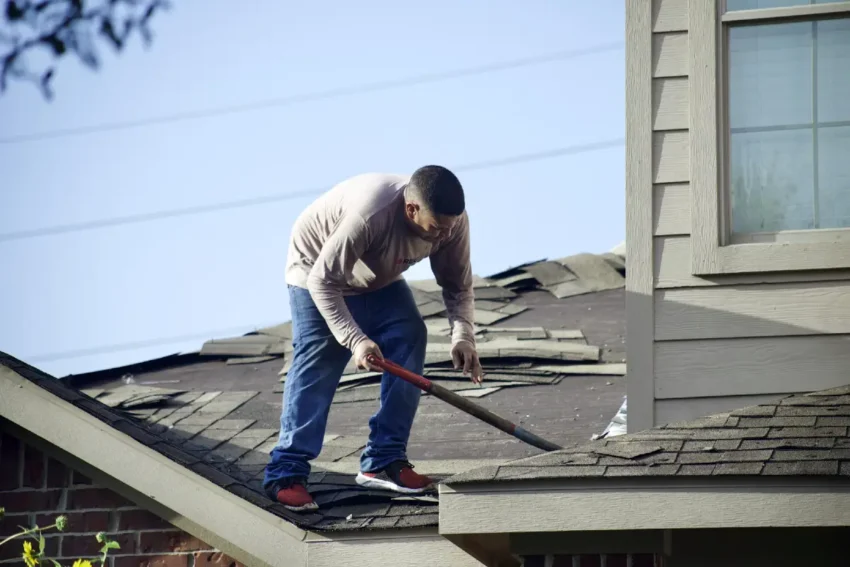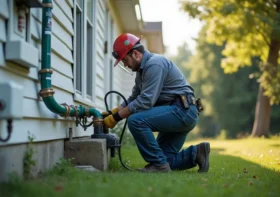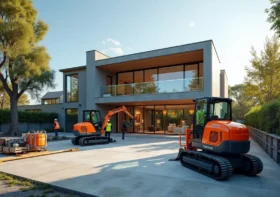Replacing Your Roof: Factors to Consider Before Starting the Project

Choosing to replace your roof is a significant decision that requires careful planning and consideration. A new roof protects your home and influences the appearance and value of the property. If you’re on the verge of making this commitment, there are several factors to ponder before moving forward.
Contents
Understanding the Lifespan of Different Roofing Materials
The lifespan of your roof significantly depends on the material selected. Options such as asphalt shingles, metal, tile, or slate each have unique durability and maintenance requirements. Asphalt shingles, commonly used in many residential areas, typically last 15 to 30 years. On the other hand, metal roofs can last up to 50 years with proper care, providing a longer-lasting solution.
The climate in your region impacts the choice of roofing material. Areas with extreme weather conditions may benefit from more durable materials like slate or metal, which withstand high winds, heavy rain, and snow better than their asphalt counterparts. Always check local guidelines to see which materials are most efficient and approved for your area. Doing some research can save you from hefty expenses down the road.
Choosing the Right Contractor
Finding the right contractor is arguably one of the most vital aspects of replacing your roof. Ask for recommendations from friends and family or check online reviews to find reputable professionals in your area. A reliable contractor should provide you with references and examples of previous projects. When you start reaching out to local contractors, discuss their experience, warranty programs, and expected timelines.
It’s beneficial to ask how they handle unexpected issues that may arise during the project. Whether you need roofing for Iowa homes, Illinois, or anywhere else, selecting a contractor familiar with local building codes will ensure the job aligns with regulations, reducing potential headaches after installation. Communication is key.
Discussing your goals and desires clearly with the contractor will help set the right expectations. A detailed estimate will allow you to understand the costs involved better, providing a clear vision of the financial aspect of your project.
Assessing Your Home’s Current Condition
Before proceeding with a roof replacement, it’s vital to evaluate the current state of your home. Check for signs of damage in the existing roof, such as leaks or sagging areas. Inspect the underlying structure, including the attic and insulation. Water damage can lead to further complications, increasing the project cost significantly if not addressed before the new roofing is installed.
Hire a professional inspector to provide a detailed assessment. They can identify problem areas that might not be immediately visible, helping to ensure you address all concerns. Knowing the complete picture will empower you to make informed decisions on both the roofing materials and the necessary repairs.
Homeowners should evaluate energy efficiency factors such as ventilation and insulation quality. Poor airflow in the attic can shorten the lifespan of roofing materials and contribute to higher utility bills.
Checking gutters and drainage systems is equally important, as clogged or damaged components can worsen roof deterioration. It’s wise to review any past maintenance records, which can provide clues about recurring issues. Taking these extra steps ensures that a roof replacement isn’t just cosmetic but enhances long-term durability and home performance.
Establishing a Budget
Roof replacement can be a considerable investment, so it’s important to establish a realistic budget before starting. Include the cost of materials and installation, and any necessary repairs or modifications to the existing structure. Labor costs can vary by region, adding another factor to think about in your budgeting. Seek written estimates from multiple contractors to compare costs.
This will allow you to gauge the range of services offered. Remember that the cheapest option may not always be the best. Instead, focus on the quality of materials and services within your budget constraints. Prioritize durability and reliability over lower costs to avoid frequent repairs in the future. Discuss financing options with your chosen contractor. Some companies offer payment plans or financing solutions to help manage the costs, easing the initial burden on your finances.
Considering Time of Year
The time of year you choose to replace your roof can affect pricing and scheduling. Many contractors are busiest in the spring and summer months, which can lead to longer wait times and potentially higher costs. Opting for roof replacement in late fall or winter might provide a price advantage, but consider potential weather-related delays that could extend the project timeline.
Take note of how the weather can impact your plan. It’s vital to avoid contracts during periods of heavy rain or snowfall. Though contractors can work year-round, adverse conditions can affect the quality and timeline of the project significantly. Planning for mild weather will help ensure more favorable conditions for both installation and longevity of the roof itself.
Keeping these considerations in mind will streamline your roof replacement process, leading to a better experience and outcome.



